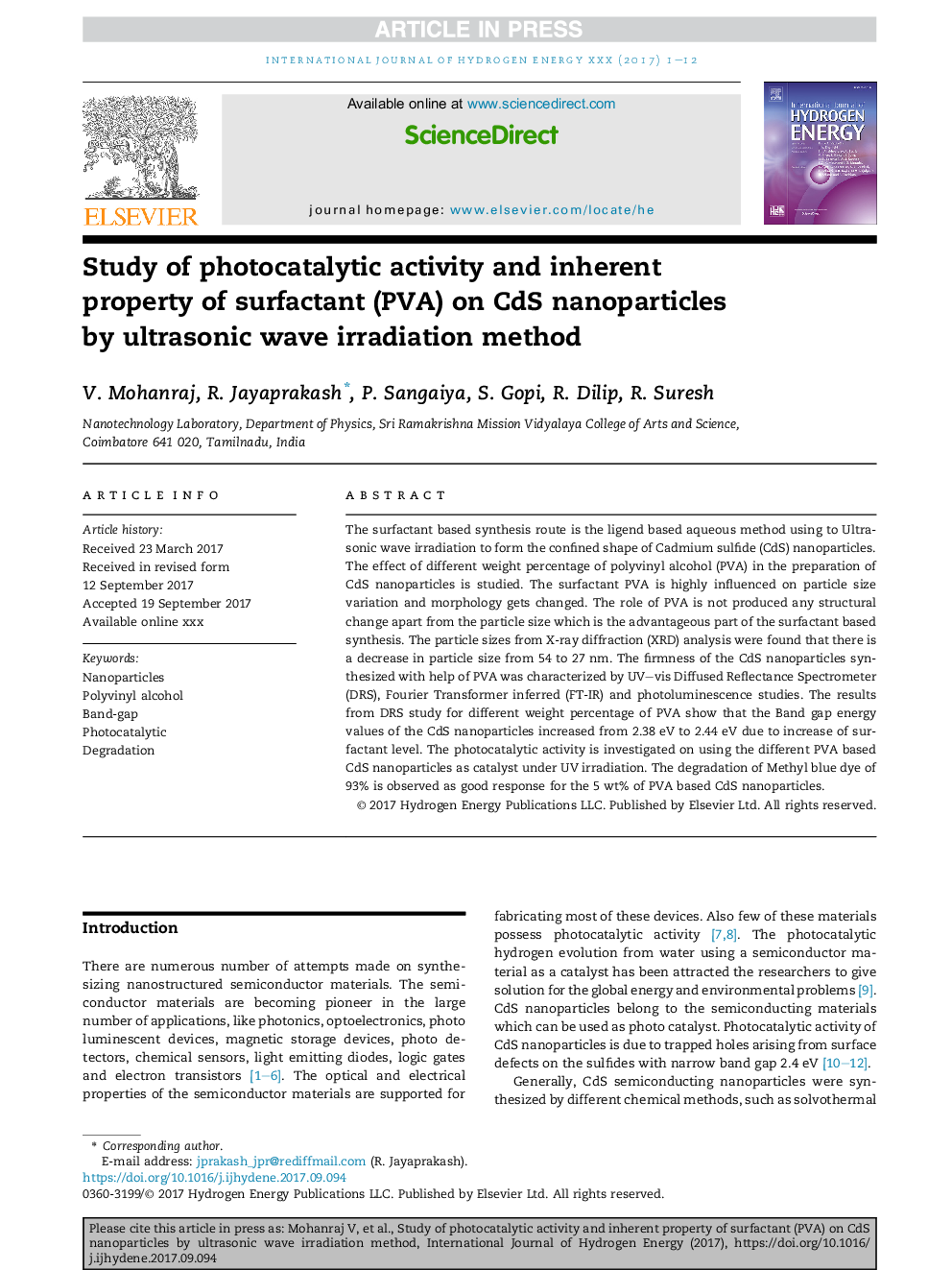| Article ID | Journal | Published Year | Pages | File Type |
|---|---|---|---|---|
| 7709402 | International Journal of Hydrogen Energy | 2017 | 12 Pages |
Abstract
The surfactant based synthesis route is the ligend based aqueous method using to Ultrasonic wave irradiation to form the confined shape of Cadmium sulfide (CdS) nanoparticles. The effect of different weight percentage of polyvinyl alcohol (PVA) in the preparation of CdS nanoparticles is studied. The surfactant PVA is highly influenced on particle size variation and morphology gets changed. The role of PVA is not produced any structural change apart from the particle size which is the advantageous part of the surfactant based synthesis. The particle sizes from X-ray diffraction (XRD) analysis were found that there is a decrease in particle size from 54 to 27Â nm. The firmness of the CdS nanoparticles synthesized with help of PVA was characterized by UV-vis Diffused Reflectance Spectrometer (DRS), Fourier Transformer inferred (FT-IR) and photoluminescence studies. The results from DRS study for different weight percentage of PVA show that the Band gap energy values of the CdS nanoparticles increased from 2.38Â eV to 2.44Â eV due to increase of surfactant level. The photocatalytic activity is investigated on using the different PVA based CdS nanoparticles as catalyst under UV irradiation. The degradation of Methyl blue dye of 93% is observed as good response for the 5Â wt% of PVA based CdS nanoparticles.
Related Topics
Physical Sciences and Engineering
Chemistry
Electrochemistry
Authors
V. Mohanraj, R. Jayaprakash, P. Sangaiya, S. Gopi, R. Dilip, R. Suresh,
